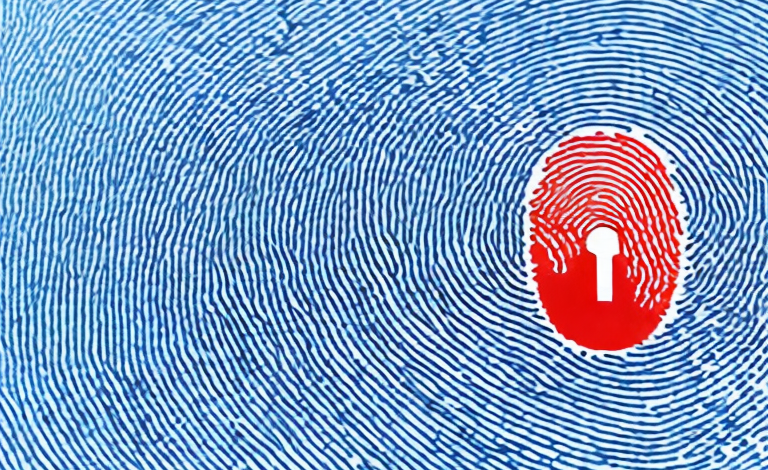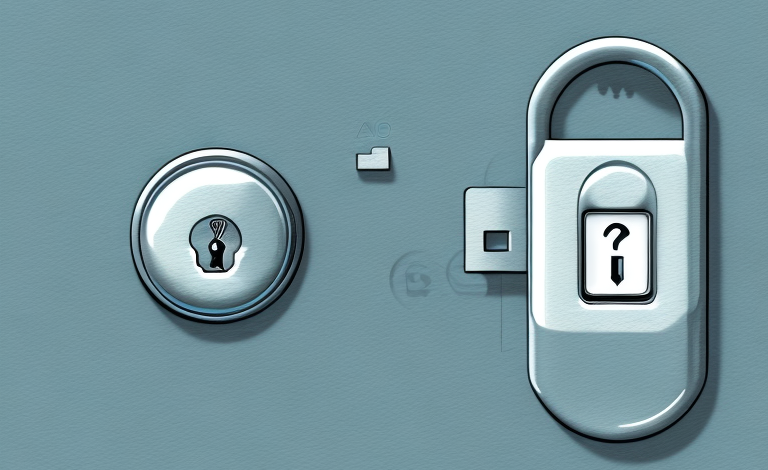In recent years, biometric authentication – the use of physical attributes and characteristics to verify identity – has gained popularity as a more secure alternative to traditional password protection. Among these biometric technologies, fingerprint recognition stands out as one of the most commonly used methods. However, while fingerprint authentication has provided convenience and security for many users, it is not without its drawbacks and limitations. In this article, we will explore the pros and cons of fingerprint recognition, and examine the technology’s vulnerabilities, limitations, and ethical concerns that could lead to potential consequences.
An overview of fingerprint technology
Fingerprint recognition technology has been around for several decades, and it is based on the unique pattern of ridges and valleys on the surface of a person’s fingertips. These patterns are believed to provide a reliable and unique identifier that can be used to verify a person’s identity. Fingerprint recognition is widely used for various applications, including unlocking smartphones, accessing secure locations, and performing financial transactions.
One of the advantages of fingerprint recognition technology is its high level of accuracy. The probability of two people having the same fingerprint pattern is extremely low, making it a highly reliable method of identification. Additionally, fingerprint recognition technology is non-intrusive and easy to use, requiring only a simple scan of the fingertip. However, there are also concerns about the security of fingerprint data and the potential for it to be hacked or stolen. As technology continues to advance, it will be interesting to see how fingerprint recognition technology evolves and adapts to address these concerns.
The pros and cons of biometric authentication
One of the main advantages of fingerprint recognition is its convenience. Users do not need to remember complex passwords or carry around physical keys or tokens. Additionally, fingerprint recognition provides a relatively high level of security, as it is difficult for another person to reproduce one’s unique fingerprints.
On the other hand, biometric authentication has several drawbacks. Unlike passwords, biometric data (such as fingerprints) cannot be changed once compromised. This poses a significant risk in case of a data breach, as the exposure of one’s biometric data could lead to identity theft, fraud, and other serious consequences. Furthermore, some people may not be able to use fingerprint recognition due to hand injuries, medical conditions, or other reasons, which could limit accessibility.
Another disadvantage of biometric authentication is the potential for false positives or false negatives. In some cases, the system may incorrectly identify a person as someone else, or fail to recognize a legitimate user. This can lead to frustration and inconvenience for users, as well as security risks if unauthorized individuals are granted access.
Despite these drawbacks, biometric authentication continues to gain popularity in various industries, including finance, healthcare, and government. It offers a unique combination of convenience and security, and can help to reduce the risk of fraud and identity theft. However, it is important for organizations to carefully consider the potential risks and limitations of biometric authentication, and to implement appropriate safeguards to protect users’ data and privacy.
Why fingerprint authentication is vulnerable to hacking
Despite its security benefits, fingerprint recognition is not invulnerable to hacking. One of the main vulnerabilities of fingerprint recognition is that the biometric data is stored in a device or server that can be hacked or breached. Hackers could potentially access and steal fingerprints, which could be used to impersonate the legitimate user. Additionally, some fingerprint recognition systems can be tricked by fake fingerprints, made using various materials such as silicon or gelatin, and attackers with physical access to a device or location can potentially lift fingerprints from surfaces such as glasses or doorknobs.
Another vulnerability of fingerprint authentication is that it is not always reliable. Factors such as dry skin, cuts, or dirt on the fingers can affect the accuracy of the fingerprint recognition system. In some cases, the system may fail to recognize a legitimate user, or it may falsely identify an unauthorized user as the legitimate one. This can lead to security breaches and unauthorized access to sensitive information or systems. Therefore, it is important to use fingerprint authentication in conjunction with other security measures, such as passwords or two-factor authentication, to enhance the overall security of the system.
Fingerprint technology’s limitations and drawbacks
Besides the potential for hacking, fingerprint recognition also has several limitations and drawbacks. Firstly, the accuracy and reliability of fingerprint recognition systems can vary greatly depending on factors such as skin condition, age, and environmental factors. In some cases, the system may generate false positives or false negatives, causing inconvenience or even preventing access for legitimate users. Additionally, fingerprint recognition systems may struggle to distinguish between identical twins or people with very similar fingerprints, which could lead to security risks. Lastly, fingerprint recognition systems may be more prone to errors or failures due to wear and tear, damage, or other factors, which could impact their reliability over time.
Another limitation of fingerprint technology is that it may not be suitable for certain industries or professions. For example, individuals who work in manual labor or have jobs that require frequent hand washing may have difficulty using fingerprint recognition systems. This is because their fingerprints may become worn or damaged over time, making it difficult for the system to accurately recognize them. Additionally, some individuals may have medical conditions or disabilities that affect their fingerprints, which could also pose challenges for fingerprint recognition technology.
The pitfalls of relying solely on fingerprints for identification
Another significant disadvantage of fingerprint recognition is that it may not be adequate as a sole means of identification. In some cases, attackers may attempt to circumvent the system by using other techniques such as social engineering, phishing, or shoulder surfing. Additionally, if fingerprint recognition is the only factor used for authentication, it is vulnerable to the “single point of failure” problem, where a failure in the system could cause a widespread outage or compromise. Therefore, many experts recommend using multi-factor authentication, which combines several factors such as fingerprint, face recognition, and password, to enhance security.
Moreover, relying solely on fingerprints for identification can also lead to false positives or false negatives. False positives occur when the system incorrectly identifies someone as an authorized user, while false negatives occur when the system fails to recognize an authorized user. This can happen due to various reasons such as poor quality of fingerprints, changes in the user’s fingerprints due to injury or aging, or even environmental factors such as humidity or dirt. Therefore, it is important to have a backup plan in case of such errors, such as a secondary authentication method or a manual override option.
Potential consequences of fingerprint data breaches
If biometric data such as fingerprints is compromised or stolen, the fallout could be significant. Unlike passwords, which can be reset, fingerprint data cannot be changed or revoked. This could lead to long-lasting security risks and identity theft. Additionally, once compromised, fingerprints could be used to access other systems or locations that use the same authentication mechanism, amplifying the potential damage. Therefore, it is crucial to protect and safeguard biometric data as rigorously as possible, using various techniques such as encryption, hashing, and secure storage.
How fingerprint recognition can lead to false positives and false negatives
As mentioned earlier, fingerprint recognition systems may generate false positives or false negatives. False positives occur when the system mistakenly identifies someone as the legitimate user, while false negatives occur when the system fails to recognize the legitimate user. Both scenarios could lead to inconvenience, frustration, and security risks. False positives could allow unauthorized access, while false negatives could prevent legitimate access, potentially leading to lost productivity, decreased user satisfaction, and reputational damage.
Ethical concerns surrounding the collection and use of fingerprint data
Besides the technical limitations, ethical concerns also arise around the collection and use of fingerprint data. According to some experts, the collection and storage of biometric data could lead to privacy violations and surveillance concerns. Biometric data is highly personal and sensitive, and its use could have significant impacts on individuals’ rights and freedoms. Moreover, if biometric data is used for profiling or discrimination, it could further exacerbate social and economic inequalities. Therefore, it is crucial to consider the ethical implications of biometric authentication and ensure that its use is transparent, accountable, and equitable.
Alternatives to fingerprint authentication for enhanced security
Given the potential drawbacks and limitations of fingerprint recognition, it is essential to consider other alternatives for enhanced security. Some of the alternatives include facial recognition, voice recognition, iris scanning, and behavioral biometrics. These methods provide varying degrees of accuracy and convenience, and some may be more suitable for specific use cases. For example, facial recognition is ideal for remote authentication, while voice recognition is suitable for hands-free environments. By diversifying the authentication methods, businesses and individuals can reduce the risk of a single point of failure and enhance security.
Limitations of current fingerprint recognition algorithms
While fingerprint recognition technology has advanced significantly in recent years, it still has several limitations and challenges. One of the main challenges is the lack of standardization in the algorithms used for fingerprint recognition. Different vendors may use different algorithms, which could lead to interoperability issues and reduced accuracy. Additionally, some algorithms may struggle with certain types of fingerprints, such as those with no ridge patterns or damaged ridges. Therefore, there is a need for standardization and improvement in the algorithms’ accuracy, reliability, and compatibility.
How advancements in technology are addressing the disadvantages of fingerprint recognition
Despite the challenges and limitations, advancements in technology are addressing some of the disadvantages of fingerprint recognition. For example, some vendors are developing more robust and reliable sensors that can capture high-resolution fingerprints even in challenging conditions. Additionally, some vendors are experimenting with new materials and technologies that can enhance the accuracy and security of fingerprint recognition. For example, some devices may use a combination of fingerprint and vein recognition, which can provide an additional layer of security. Overall, the advancements in technology could help mitigate the risk of fingerprint recognition and provide a more secure and reliable authentication method.
The future of biometric authentication: what’s next after fingerprints?
As biometric authentication becomes more prevalent, it is worth considering what the future holds beyond fingerprints. Some of the emerging technologies include palm vein recognition, electroencephalogram (EEG) authentication, and DNA authentication. These methods provide even higher levels of accuracy and security and could be more resistant to hacking and tampering. However, they also raise new challenges and ethical concerns around privacy, consent, and fair use. Therefore, as we move towards a more biometric future, it is essential to balance the potential benefits and risks and ensure that the technology is aligned with our ethical values and principles.
In conclusion, fingerprint recognition has its advantages and disadvantages as a biometric authentication method. While it provides a convenient and relatively secure way to verify identity, it is also vulnerable to hacking, has limitations and drawbacks, and raises ethical concerns around privacy and discrimination. By understanding these challenges, businesses and individuals can take proactive measures to mitigate the risks and enhance security. Additionally, by exploring alternative authentication methods and advancing technology, we can build a more resilient and trustworthy authentication ecosystem for the future.



